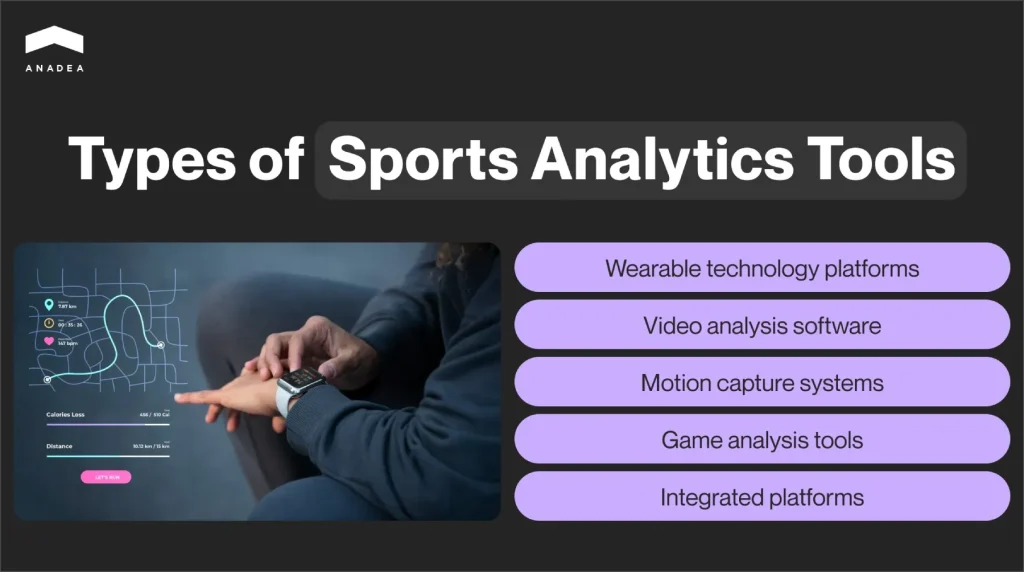Fantasy sports essentials guide you toward a disciplined, day-one approach to building a competitive team. For beginners, this guide introduces core concepts, the best fantasy sports tools, and practical strategies you can apply this season. You’ll learn to analyze league formats and player value while avoiding common pitfalls that trip up many new owners. We also weave in beginner-friendly tips such as fantasy sports for beginners considerations and practical draft planning to set you up for success. By combining clear explanations with actionable steps and related topics like fantasy football tips, fantasy basketball strategies, fantasy sports tools, and draft strategies for beginners, you’ll gain confidence quickly.
A solid foundation for fantasy sports starts with understanding the underlying rules and structures that shape competition. From this vantage point, you can translate the same ideas into a practical playbook by focusing on league formats, scoring mechanics, and value-based pick decisions. This second-angle approach uses alternative terms such as core competencies, draft preparation, and in-season management to outline a repeatable process. By mapping players against expected performance and adjusting for injuries, bye weeks, and schedule strength, you align with LSI concepts that capture related ideas without repeating exact keywords, and this is the essence of Fantasy sports essentials. Think of it as a holistic, data-informed framework that supports both beginners and seasoned owners as they craft lineups, make trades, and optimize waivers across fantasy sports.
Understanding Your League Format: Redraft, Dynasty, and DFS
Understanding your league format is the foundation of every successful fantasy season. Redraft, dynasty, and daily fantasy (DFS) each reward different decision-making frameworks, roster constructions, and risk tolerances. For beginners, recognizing how the format affects scoring, roster size, and transaction frequency helps you tailor your early-game priorities and avoid misaligned expectations. In a redraft league, consistency and injury management often matter most, while DFS rewards sharp, week-to-week decision-making and upside plays. By mapping your approach to the league’s rules, you set clearer boundaries for your drafting and lineup decisions.
To translate format knowledge into action, start by collecting your league’s scoring system, roster positions, and transaction rules. This is a practical step for fantasy sports for beginners, helping you avoid overvaluing players who won’t contribute under your specific format. As you learn the nuances, you’ll begin spotting which players hold steady value in your league and which ones are more volatile, which is essential to forming a solid draft strategy for beginners.
Reading Projections and Finding Value: From Data to Decisions
Projections are a useful compass but not gospel. For fantasy sports for beginners, the goal is to use projections as a baseline to compare players across positions, then overlay context like injuries, bye weeks, and schedule strength. Concentrate on a small set of trusted sources and learn how to interpret their numbers alongside consensus rankings. The key is identifying value picks—players whose projected output exceeds their draft cost and who fit your team’s needs.
Value is often found when projections clash with public perception. Compare multiple projection sets, adjust for your league’s scoring quirks, and look for players who are underpriced due to recent injuries or reevaluated roles. By building a disciplined framework for evaluating projections, you’ll make smarter trades, avoid overpaying for hype, and steadily improve your fantasy football tips and overall performance.
Draft Strategies for Beginners: Early Rounds, Mid-Rounds, and Sleepers
A thoughtful draft strategy for beginners balances reliability with upside. In the early rounds, prioritize proven scorers who deliver points with a relatively low injury risk, creating a stable foundation for your team. As the draft progresses into mid-rounds, seek sleepers and players with favorable long-term trajectories who offer value relative to their cost. The goal is to build a core that can anchor your lineup while leaving room to adapt if unexpected runs on certain positions occur.
Flexibility is a hallmark of strong draft play. If a top-running back slides or a promising wide receiver rises, be prepared to pivot rather than forcing a plan. Draft strategies for beginners should emphasize patience, data-informed decisions, and the ability to read the room in your league. By staying open to value picks and avoiding overcommitment to a single path, you’ll create a roster with both stability and upside.
Leveraging Fantasy Sports Tools: Automation for Smarter Rosters
Automation and analytics can transform how you build and manage your team. Fantasy sports tools—such as draft kits, trade analyzers, and lineup optimizers—assist with quick scenario testing and data-backed decisions. For newcomers, getting comfortable with a couple of reliable tools helps you spot patterns you might miss when calculating by hand. Tools are not a substitute for your judgment, but they reduce the cognitive load and help you stay objective when evaluating players across positions.
A practical use of these tools is to maintain a personal playbook that tracks prospects, sleepers, and strategic moves for the first half of the season. Record notes on player roles, injury histories, and scheduling quirks, and keep a short list of trade targets. Regularly revisiting and updating this playbook with the help of fantasy sports tools sharpens your decision-making and makes week-to-week management more systematic.
In-Season Mastery: Waivers, Streaming, and Weekly Matchups
In-season management is where a lot of fantasy success is earned. Weekly lineup optimization, matchup analysis, and timely waiver claims turn a good team into a great one. Streaming—picking up free agents with favorable matchups for a single week—can be a powerful risk-management technique, especially for beginners who want to minimize a stalled lineup while still chasing upside. The key is staying disciplined, evaluating each week’s potential gains against the rest of your roster, and avoiding impulsive moves.
Weekly decision-making should be driven by matchup data and practical risk assessment. Start each week by reviewing injury reports, schedule difficulty, and opponent strengths. A steady, data-informed approach to waivers and streaming helps you exploit favorable windows while protecting your core players. This in-season mindset aligns with the broader fantasy sports for beginners journey, turning early education into consistent, incremental gains.
Fantasy Sports Essentials: A Beginner’s Playbook for Long-Term Success
Fantasy sports essentials unite the fundamentals of understanding formats, reading projections, and making disciplined decisions into a repeatable workflow. Building a personal playbook—whether in a simple notebook or a digital document—helps you track players you like, preseason sleepers, and moves planned for the first half of the season. This disciplined approach is particularly valuable for fantasy sports for beginners, providing a clear path from confusion to confident decision-making.
Long-term success comes from iterative learning and consistent practice. As you gain experience, you’ll refine your playbook, expand your knowledge of fantasy football tips and fantasy basketball strategies, and incorporate sport-specific insights across leagues and formats. The journey from novice to owner who competes at a higher level rests on steady data-driven decisions, timely moves, and a thoughtful balance of risk and reward.
Frequently Asked Questions
What are the core components of Fantasy sports essentials, especially for fantasy sports for beginners?
Fantasy sports essentials for beginners focus on understanding league formats and scoring, evaluating player value with trusted projections, and leveraging reliable fantasy sports tools. Start with these fundamentals to build a solid foundation for any fantasy sport.
How do fantasy sports tools fit into the Fantasy sports essentials toolkit for draft prep and in-season decisions?
Fantasy sports tools—draft kits, trade analyzers, and lineup optimizers—are central to the Fantasy sports essentials toolkit. They support draft prep and in-season decisions by testing scenarios and highlighting data-driven options, while preserving your judgment.
What draft strategies for beginners are recommended within the Fantasy sports essentials framework?
A practical draft strategy for beginners within the Fantasy sports essentials framework is to anchor early picks on proven scorers, mix in upside sleepers later, and stay flexible to read the room during the draft.
What role do fantasy football tips play in the Fantasy sports essentials approach to weekly lineup decisions?
Fantasy football tips shape weekly lineup decisions by focusing on matchups, injuries, and smart streaming picks, all within the broader Fantasy sports essentials approach.
Can you apply Fantasy basketball strategies under the Fantasy sports essentials framework?
Yes. The Fantasy sports essentials framework covers sport-specific strategies, including fantasy basketball strategies like pace, usage, and efficiency, while applying cross-sport principles.
How should beginners use projections and value picks as part of the Fantasy sports essentials approach?
Treat projections as a baseline, compare with consensus rankings, and adjust for injuries, byes, and schedule to identify value picks within the Fantasy sports essentials method.
| Aspect | Key Point | Why It Matters | Practical Takeaway |
|---|---|---|---|
| League Formats & Scoring | Understand your league’s format and scoring (redraft, dynasty, DFS) | Different formats reward different skills; affects draft strategy and decisions | Map scoring rules and roster positions; avoid overvaluing players who won’t contribute in your format |
| Projections & Value | Read and apply player projections; compare sources; adjust for context (injuries, bye weeks, schedule strength) | Projections help identify solid value relative to cost; they are a guide, not gospel | Use 1-2 trusted sources; compare with consensus rankings; adjust for context |
| Automation & Tools | Use fantasy tools (draft kits, trade analyzers, lineup optimizers) to streamline decisions | Tools save time and help test scenarios, reducing manual calculations | Tools complement judgment; start with 1-2 reliable tools |
| Draft Day Strategy | Draft day strategies: balance risk and upside; anchor early picks on proven scorers; add upside sleepers later | A solid base with room for upside and flexibility in later rounds | Read the room; stay flexible; avoid locking into a single path |
| In-Season Management | In-season management: lineup optimization, weekly matchup evaluation, and timely waivers | Weekly decisions drive season outcomes | Practice streaming; disciplined judgment; adjust rosters weekly |
| Sport Nuances | Sport-specific nuances: different dynamics across football, basketball, and other sports | Understanding dynamics strengthens decisions across leagues | Study matchups, injuries, pace, usage, and scheduling quirks |
| Personal Playbook | Build a personal playbook to track players, sleepers, and trade targets | Data-driven decisions; playbook evolves with season | Maintain notes on roles, injuries, scheduling; update with data |
| Common Beginner Mistakes | Common beginner mistakes: overvaluing preseason hype, ignoring bye weeks, chasing last week’s hot pick | These missteps derail consistency and reliability | Prioritize consistency; rely on data/tools; avoid overreactions |
| Progression to Advanced Play | Progression to advanced play: roles change as seasons progress; watch for breakout vs bust signals | Improves weekly decisions and adaptability | Balance risk and reward; refine your playbook; continuous learning |
Summary
Fantasy sports essentials offer a structured foundation for building a competitive team from day one. This descriptive overview highlights core concepts and practical steps that translate across fantasy football, basketball, and other formats. By understanding league formats, evaluating projections, and leveraging trusted tools, you set yourself up for steady improvement and smarter decisions. As you gain experience, your playbook will evolve, sharpening your ability to read matchups, manage risk, and achieve weekly wins. Happy drafting, and may your fantasy leagues thrive with well-applied tips and thoughtful strategies.



